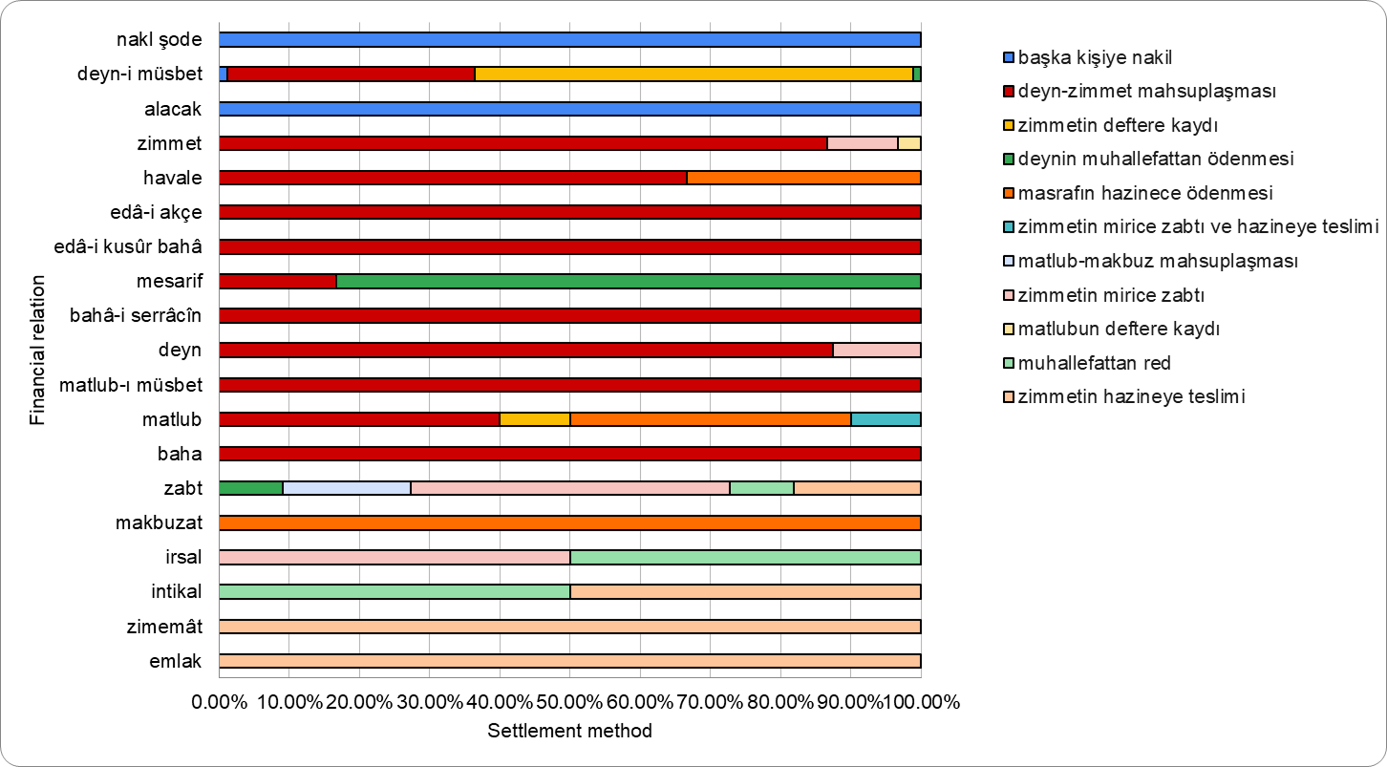
Introduction
This poster presents the construction of a relational database for an Ottoman fiscal codex dated 1808-20, as part of a larger research project at Stanford University aimed at explaining 18th-19th century Ottoman finance and politics. It offers a detailed walkthrough of database creation within an RDBMS, and a user scenario for analyzing inventory management and debt settlement in Ottoman power making.
The Ottoman Fiscal Codex of 1808-1820
This collaborative study by historians and computer scientists constructs a relational database for a 380-page codex (1808-1820) from the Ottoman Archives in Istanbul, call number MAD9726. Prepared by Ottoman accountants as a debt inventory in encrypted texts in Turkish and Persian short-hands; it recorded the estates of 134 powerful individuals.
Challenges and Opportunities
The manuscript’s complex layout, paleographical and semantic difficulties, with the absence of existing datasets in Ottoman fiscal history, necessitated extensive manual work and a study of early modern accounting practices.
We have an extensive knowledge of the political developments of the era (Yaycioglu 2016). However, this research presents for the first time how debt settlement was integral to Ottoman political history (Deringer 2018). It offers a fresh perspective on the trajectory of the Ottoman Empire from c. 1750 to 1850, which is traditionally perceived as a divergence between Europe and the Islamic world. (Pomeranz 2000, Acemoğlu and Robinson 2012). The insights derived from the Ottoman case will contribute to the field of modernizing Eurasian empires, enriching the diversity of topics in digital humanities.
Data Modeling
Step 1: Transcription
The manuscript was prepared using encrypted Arabic script in Turkish and Persian short-hands, transcribed into Latin script in three years.
Step 2: Data Modeling
We started with extracting unstructured data categories (actors, their titles, fiscal transactions), classifying them and manually building structured data (role of actors in transactions, transaction types, debt settlement methods). A relational database is preferred to enable the application of more complex queries and mathematical operations, facilitate data manipulation using queries, and improve computational ease. Our database’s Entity-Relationship (E-R) model is represented by the tables and relationships demonstrated in MySQL. To achieve this, we prepared a conceptual map organizing tables, defining primary keys and foreign keys with their relationships, and ensuring accurate data types (integer, float, string etc.) for precise querying.
Step 3: Data Creation
Ottoman fiscal history lacks datasets that meet our research goals. Our manuscript has a complex layout without a regular pattern, and rule sets did not apply due to the controversial nature of the debt settlement processes recorded. Consequently, automated NER methods could not be utilized and the data creation required extensive manual work.
Step 4: Database Design in a RDBMS
MySQL allows for the creation of tables and relationships via its GUI, making it accessible to those not deeply familiar with relational databases or SQL. Data entry and manipulation are simplified through the GUI, requiring only basic theoretical knowledge of RDBs. MySQL provides compatibility with other applications, such as Gephi.
Determining how and where to build the relations with respect to the data source and how the queries will be made across tables are crucial points for the process of accessing and using the data. Certain information stored inside one table as a primary key, can be transferred and used by creating a foreign key inside another table.
Query and Analysis: A User Scenario
A key research question examined the relationship between debt settlement methods and financial transaction types. Data from 400 entries on Alemdar Mustafa Pasha revealed 11 debt settlement methods and 21 transaction types. MySQL queries illustrated these complex connections better than a flat spreadsheet:

Image 1: MySQL query for the relationship between settlement methods and transactions
Image 2 shows the percentage of debt or receivable settled by each method. Debt assignment indicated in red, was the most common method. However, inheritance and property transactions, often involving the deceased Pasha’s family, were individually handled.

Image 2: Stacked bar chart for settlement methods and financial relations